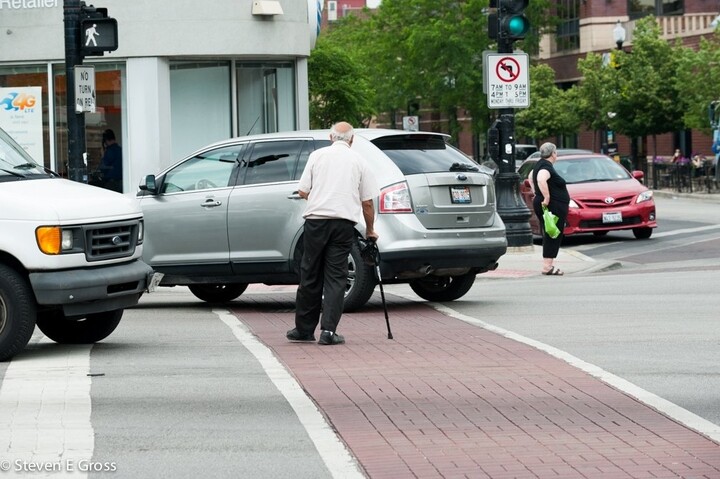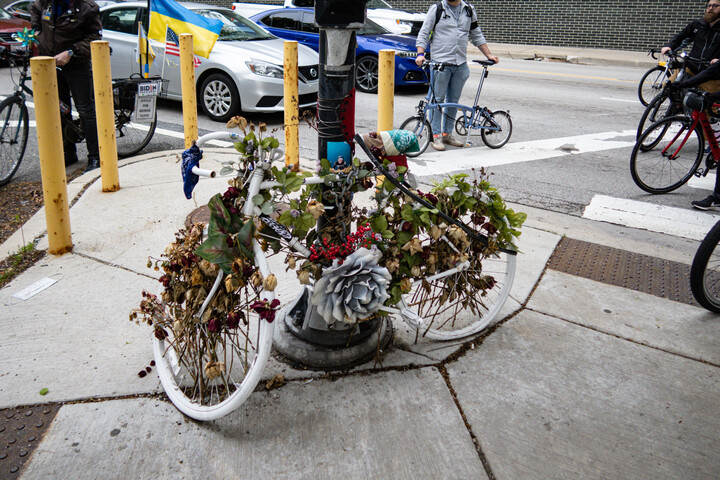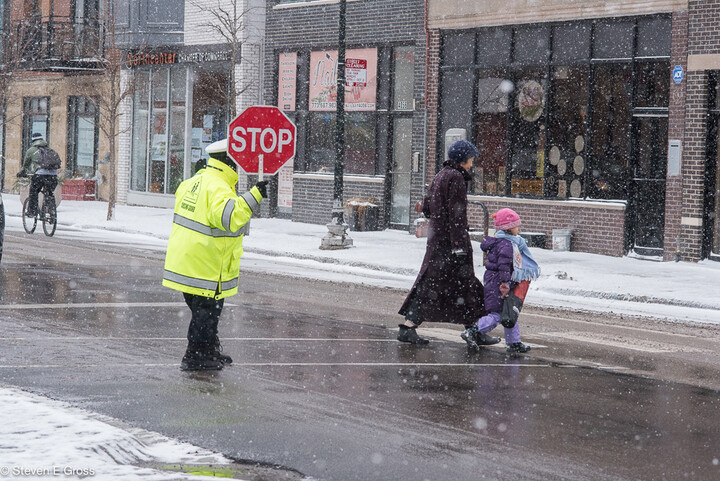Editorial Note (January 17, 2025): We are closer than ever to lowering Chicago’s default speed limit, thanks to the tireless efforts of advocates like you. Your personal stories and outreach to alderpeople have been instrumental in advancing this campaign. On January 15, 2025, while the City Council did not hold a final vote on the speed limit, an important step forward was taken. The council approved the creation of an interagency working group with a 49-1 vote. This group will focus on developing recommendations for fair and equitable enforcement of the proposed ordinance.
Despite the delay, the momentum for safer streets in Chicago continues to build. As we move forward, your continued support and advocacy remain crucial. Together, we can work towards creating safer streets and protecting lives across our city. Stay tuned for updates and opportunities to further support the campaign. And please check out our recent Chicago Tribune letter to the editor, responding to the editorial board’s opinion piece against lowering the speed limit.
____________________________
The threat of speeding drivers is a daily reality for many Chicagoans, impacting their safety, well-being, and quality of life.
From parents worried about their children’s safety to cyclists and pedestrians feeling endangered on their daily commutes, the consequences of speeding are far-reaching.
As the Chicago City Council considers lowering the speed limit from 30 mph to 25 mph, we invited residents to share their experiences with how speeding drivers impact their lives.
As you’ll see, speeding drivers don’t just disrupt daily life — they pose a direct threat to the safety and health of everyone who uses our streets and sidewalks.
SAFETY CONCERNS FOR CHILDREN AND FAMILIES
When speeding is commonplace, parents and caregivers have to worry so much more about the safety of their children.
Brian Neuman is one of the many parents who sees the negative impact of speeding on his family’s daily life:
“The threat of speeding drivers affects what my kids can safely do outside. For example, speeding, aggressive, impatient drivers make it unsafe for them to cross the road alone, even at marked crosswalks with stop signs. When walking, I must constantly be on alert for any problematic motorists.”
This sentiment is echoed by Kathryn Remivasan, who shares her fears as a parent:
“It’s scary and difficult to let my kids play outside because drivers are speeding and blowing stop signs. I bike my kids to school and am scared constantly because I don’t have any protected bike lanes and people run red and yellow lights and drive aggressively.”
The impact on children’s safety extends to school zones as well, says teacher Grayson McGregor:
“As a teacher, I see cars speed through the school zone all the time. Most of my students walk to school and deserve to feel safe while doing so!”

CYCLING SAFETY AND COMMUTER EXPERIENCES
Many Chicago residents rely on bicycles for transportation, but speeding cars make this option less appealing and increasingly dangerous.
Jessie Steckling says that getting struck by a speeding driver while biking is a threat that can be mitigated with slower speed limits:
“While I still choose to frequently ride a bike, I’ve essentially accepted that it’s just a matter of time before I get hit and badly injured by a speeding or distracted driver. I know countless people who have gotten severely injured. Right now, cycling is my main form of mobility. I would feel so much safer if cars slowed down.”
John Casey highlights how unsafe driving has forced him to alter his routines:
“Speeding and other types of unsafe driving is a constant source of stress on my daily bicycle commute. I’ve altered my route just to avoid this kind of stuff, but, to be honest, it’s not easy. I have a camera now just to record the craziness I witness daily.”
COMMUNITY IMPACT AND QUALITY OF LIFE
Beyond individual safety concerns, speeding traffic has far-reaching effects on community life and neighborhood vitality.
According to D. Festa:
“Speeding cars in my neighborhood have become a persistent menace, disrupting peace and quiet with increasing noise pollution (speeding cars create more noise than slow ones). The situation worsens with reckless drivers regularly running red lights, posing life-threatening risks to pedestrians, cyclists, and other motorists.”
Festa further elaborates on the community-wide effects:
“The ripple effects of speeding traffic extend beyond individual experiences, profoundly impacting community quality of life:
>> Neighborhoods become less livable, with residents hesitant to enjoy outdoor spaces or engage in physical activity.
>> Local businesses suffer as potential customers opt for safer areas or feel as though they cannot safely patronize the streets.
>> Community cohesion dwindles as residents feel isolated and disconnected.”

CALLS FOR CHANGE
Many of the people who responded see the proposed speed limit reduction as a crucial step towards creating safer, more livable streets.
Daniel Gentile says we need to combine a lower speed limit with building streets that are designed for safety:
“Speeding is dangerous, and drivers at faster speeds don’t see pedestrians like me as easily, making crossing the road even outside my house feel like a gamble. Decreasing the speed limit is step one. I’d love to see all crosswalks raised with curb bulbs for shorter crosswalk distance and physical barriers to dangerous speeding.”
Greg F. asks a question that gets to the heart of the matter:
“Who is this city designed for: cars or people? Walking Chicago’s neighborhood streets with my 2-year-old nephew is stressful, scary. A car that is supposed to be going 30 has a higher likelihood to be going 32, 33, 35 mph. A car supposed to be going 25 will hopefully max out at 30, and have a higher chance of fully stopping altogether.
These comments paint a picture of a city where residents feel unsafe and constrained by speeding traffic. Drivers traveling at unsafe speeds not only pose safety risks but they also erode the fabric of community life.
The potential benefits of lowering the speed limit should be clear — not just in terms of safety statistics, but in the everyday lives of Chicagoans.
With support from people like you, Active Transportation Alliance works to improve our options for walking, biking, and transit. You can be part of the movement for safer and more equitable streets by joining Active Transportation Alliance, renewing your membership, or donating today.

